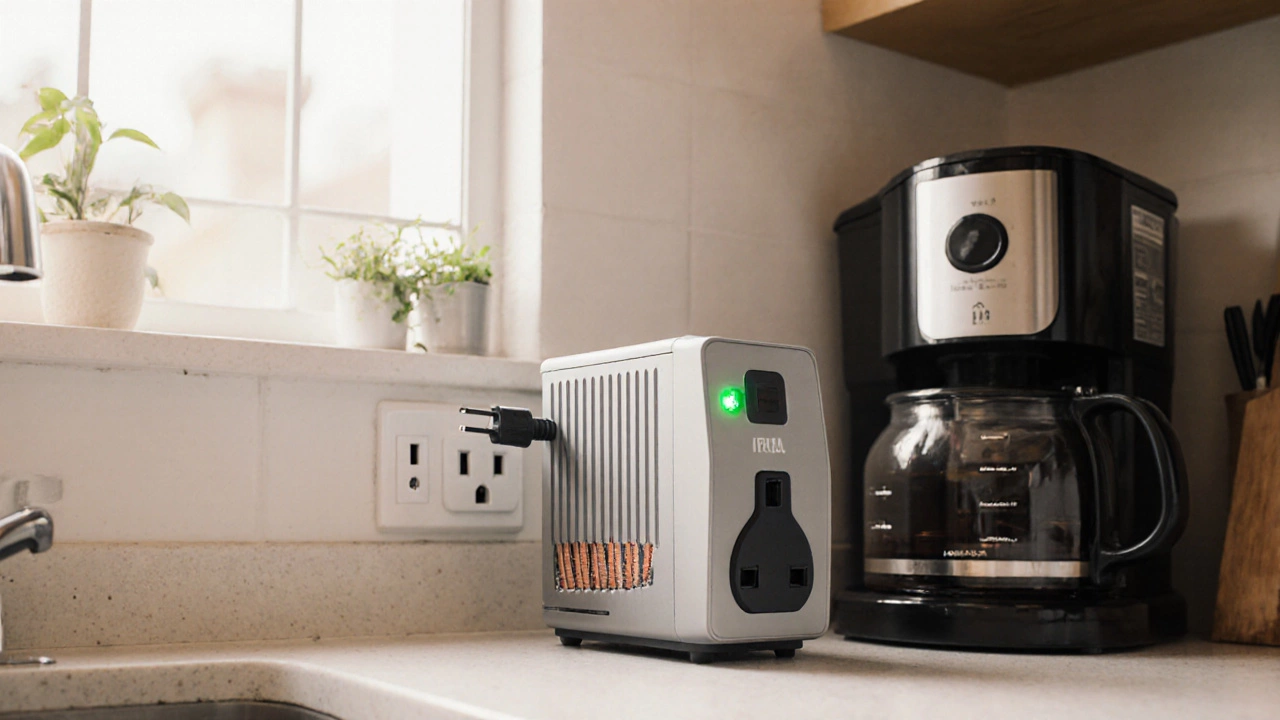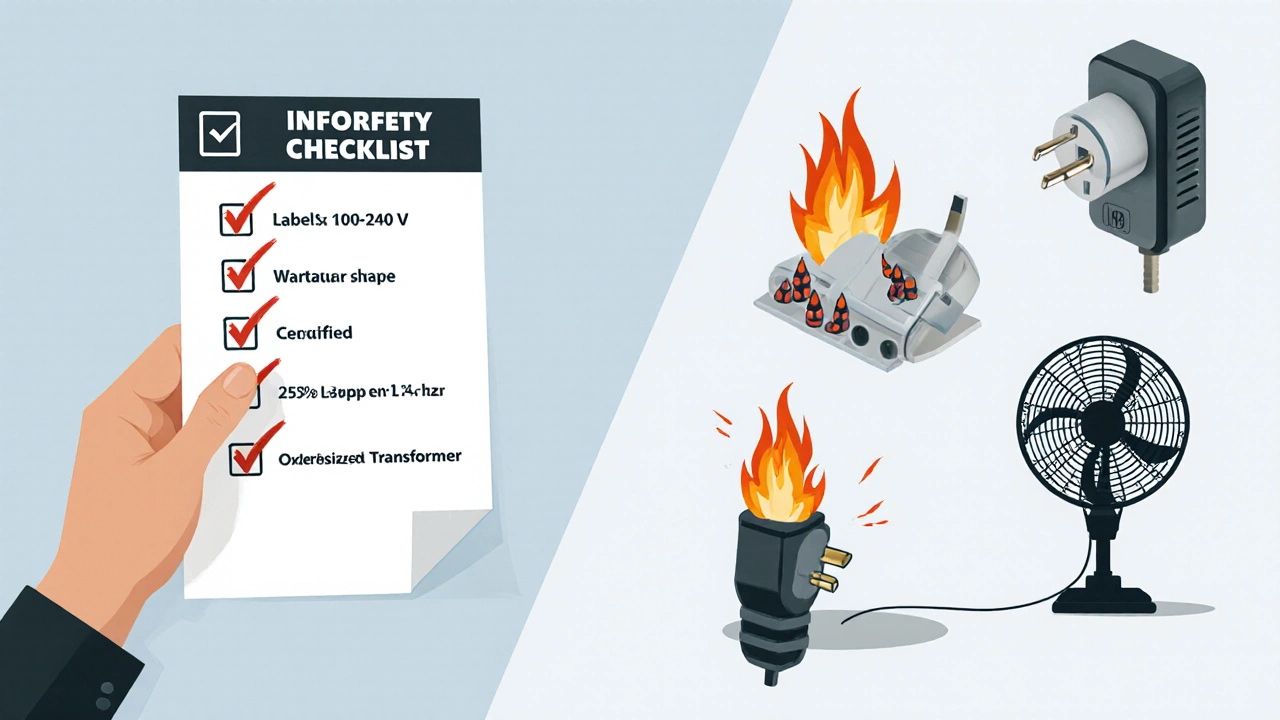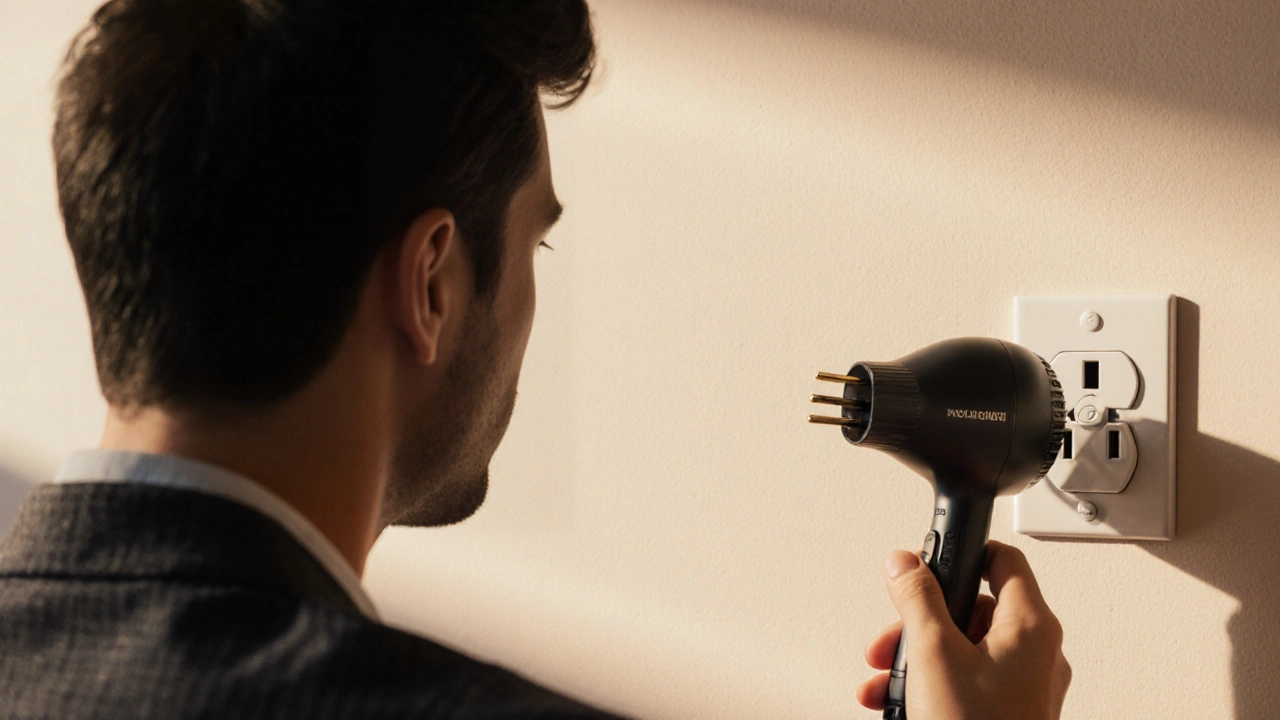120V Appliance Transformer Calculator
Transformer Sizing Calculator
Calculate the minimum transformer size needed for your 120V appliance in India
Recommended Transformer Size
Transformer Requirements
For your W appliance, you'll need a transformer rated at least W (25% safety margin).
Remember: This calculator only determines transformer wattage. You'll still need a plug adapter for Indian sockets.
Important Safety Notes
- Always select a transformer rated 25% higher than your appliance's wattage
- Never use a transformer with lower wattage than recommended
- Check if your appliance is single-voltage (120V only) or dual-voltage (100-240V)
- Look for transformers with thermal overload protection
Ever wondered if you can plug that 120V appliances devices built for 120‑volt mains, common in the U.S. and Canada into an Indian wall socket. The short answer is: not without some preparation. This guide walks you through the voltage differences, the gear you’ll need, and the safety steps to keep your gadgets humming without blowing a fuse.
Indian Electrical Standards at a Glance
India’s power grid supplies a 230V mains voltage the standard residential voltage of 230 volts, 50 hertz (Hz). That means the voltage is nearly double what a typical North‑American appliance expects, and the frequency is also lower (50 Hz vs. 60 Hz).
Plug shapes follow the International (IEC) system. The most common types are Type C the two‑pin “Europlug” and Type D the three‑pin “old Indian” plug. Neither matches the North‑American Type A/B flat‑blade plugs used in the U.S..
Why 120V Appliances Misbehave on 230V
If you connect a 120V device straight to a 230V socket, the excess voltage can cause the motor, heating element, or electronic circuitry to overheat instantly. Small gadgets like phone chargers may fry, while larger loads such as kettles or hairdryers can become fire hazards.
Beyond voltage, frequency matters for devices with motors or clocks. A motor designed for 60 Hz will run slower and hotter at 50 Hz, reducing lifespan.
Three Safe Options to Power 120V Gear
- Dual‑voltage appliances: Some modern devices have a built‑in switch or auto‑detect feature that allows them to operate on both 120V and 230V. Look for a label that reads “100‑240V” or “120/230V”. No extra gear needed.
- Step‑down transformer a device that converts 230V AC down to 120V AC, typically rated by wattage: Ideal for high‑power appliances like coffee makers or hair straighteners.
- Voltage converter a simpler, often less robust version of a transformer, suited for low‑power electronics: Good for chargers, laptops, and small electronics.
Choosing the Right Step‑Down Transformer
Pick a transformer that exceeds the appliance’s power draw by at least 25%. For a 1000 W iron, a 1250 W (or 1500 W for safety margin) transformer is wise. Look for features like:
- Thermal overload protection shuts off the unit if it overheats
- Fuse or circuit breaker guards against short circuits
- Noise‑reduction design for sensitive electronics
Remember: a transformer changes voltage but not plug shape. You’ll still need a plug adapter a simple device that matches the transformer’s plug to the Indian socket type.

Plug Adapters vs. Transformers: When Does Each Matter?
A plug adapter only fixes the physical connector; it does nothing to the voltage. Use an adapter if your appliance already supports 230V (dual‑voltage) but the plug type differs.
A transformer or converter handles the voltage discrepancy. They are bulkier and cost more, but they’re necessary for single‑voltage 120V gear.
Safety Checklist Before You Plug In
- Verify the appliance’s voltage rating: 120V, 100‑240V, or 230V.
- Identify the appliance’s wattage (usually on the label). Add a 25% safety margin.
- Select a transformer or converter that meets or exceeds that wattage.
- Confirm the transformer has thermal overload protection and a fuse.
- Use the correct plug adapter for the transformer’s outlet.
- Inspect cords for damage before connecting.
- After first use, monitor for unusual heat or buzzing sounds.
Common Pitfalls and How to Avoid Them
- Undersized transformer: Leads to overheating and possible appliance failure. Always size up.
- Skipping the adapter: Even with a transformer, the plug must match the socket.
- Assuming frequency is irrelevant: Certain motor‑driven devices (e.g., ceiling fans) may run slower at 50 Hz.
- Using cheap, un‑certified gear: Look for certifications like IS 302 Indian safety standard for electrical appliances or IEC marks.

Quick Reference Table
| Aspect | What to Look For |
|---|---|
| Voltage conversion | Step‑down transformer (230V → 120V) |
| Power rating | Appliance wattage × 1.25 (minimum) |
| Plug compatibility | Plug adapter for Type C/D sockets |
| Safety features | Thermal overload, fuse, IEC/IS certification |
| Frequency issue | Check if appliance tolerates 50 Hz |
Bottom Line
Yes, you can safely use 120V appliances in India, but only after you address two things: voltage conversion and plug compatibility. Dual‑voltage gear makes life easy, while a properly sized step‑down transformer paired with a plug adapter does the job for single‑voltage devices. Follow the safety checklist, respect wattage limits, and you’ll enjoy your favorite gadgets without blowing a fuse.
Frequently Asked Questions
Do I need a transformer for a laptop charger?
Most modern laptop chargers are rated 100‑240V, so you only need a plug adapter, not a transformer.
Can a 1500W kettle run on a 10A household circuit?
India’s typical circuit is 10 A at 230V (≈2300W). A 1500W kettle is fine, but ensure the transformer you use can handle at least 1800W.
Is frequency a deal‑breaker for my 120V blender?
Most small kitchen appliances aren’t frequency‑sensitive. They’ll work at 50 Hz, though the motor may run slightly slower.
What certification should I look for on a transformer?
Look for IEC compliance marks and Indian standard IS 302. These indicate the unit meets safety and performance criteria.
Can I use a cheap travel adapter instead of a transformer?
Only if the device is dual‑voltage. A simple adapter won’t change voltage, so a 120V‑only device will be damaged.
